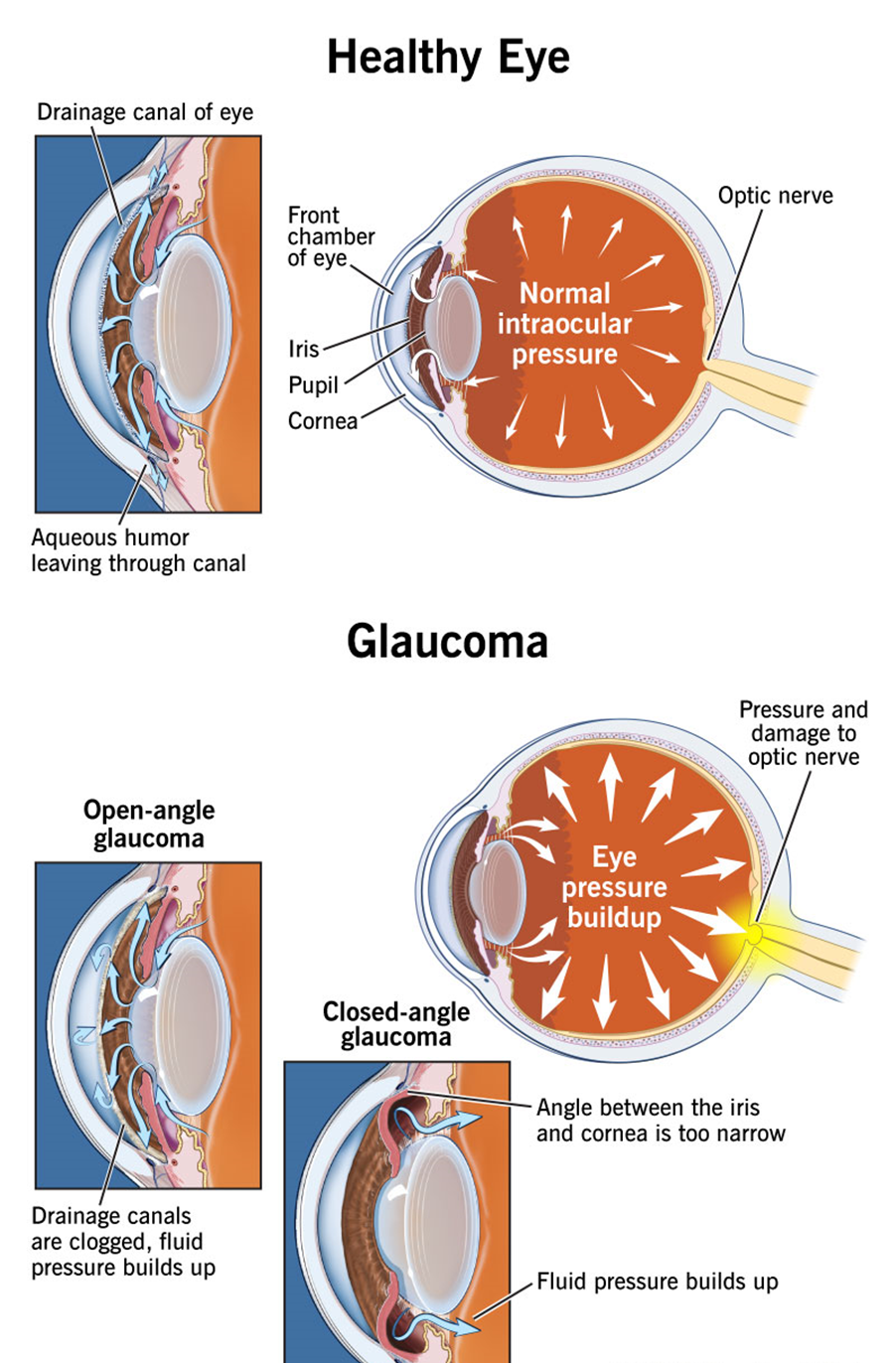A client asks the nurse about a prescription for the antihistamine, diphenhydramine (Benadryl). The nurse should teach the client that this medication is contraindicated in clients who have a history of which condition?
Asthma
Hypertension
Glaucoma
Depression
The Correct Answer is C
Choice A reason: Asthma
Diphenhydramine is an antihistamine that can cause drying of the airways and thickening of bronchial secretions, which might exacerbate asthma symptoms. However, it is not strictly contraindicated in asthma patients. Instead, caution is advised, and it should be used under medical supervision if necessary.
Choice B reason: Hypertension
While diphenhydramine can cause mild increases in blood pressure due to its anticholinergic effects, it is not contraindicated in patients with hypertension. Patients with hypertension should use it cautiously and under medical advice, but it is not an absolute contraindication.
Choice C reason: Glaucoma
Diphenhydramine is contraindicated in patients with glaucoma, particularly closed-angle glaucoma. This is because diphenhydramine has anticholinergic properties that can increase intraocular pressure, potentially worsening the condition. Patients with glaucoma should avoid using diphenhydramine to prevent complications related to increased eye pressure.

Choice D reason: Depression
Diphenhydramine is not contraindicated in patients with depression. However, it can cause drowsiness and sedation, which might affect mood and energy levels. Patients with depression should use it cautiously and under medical supervision, but it is not an absolute contraindication.
Nursing Test Bank
Naxlex Comprehensive Predictor Exams
Related Questions
Correct Answer is C
Explanation
Choice A Reason:
A pureed diet consists of foods that are blended to a smooth consistency. This type of diet is typically recommended for clients who have severe swallowing difficulties or are at risk of aspiration. While it can be easier to consume for those with significant dental issues, it may not provide the variety and texture that a mechanical soft diet offers, which can be more satisfying and nutritionally adequate for someone with multiple cavities and missing teeth.
Choice B Reason:
A soft diet includes foods that are easy to chew and swallow but are not necessarily blended or pureed. This diet is often recommended for clients recovering from surgery or those with mild chewing difficulties. However, for a client with multiple cavities, chipped, and missing teeth, a soft diet might still pose challenges in terms of chewing and could lead to discomfort or inadequate nutrition.
Choice C Reason:
A mechanical soft diet is specifically designed for individuals who have difficulty chewing but do not require pureed foods. This diet includes foods that are easy to chew and swallow, such as ground meats, cooked vegetables, and soft fruits. It provides a balance of texture and nutrition, making it the most appropriate choice for a client with multiple cavities, chipped, and missing teeth. This diet helps ensure the client can eat comfortably and maintain adequate nutrition.
Correct Answer is B
Explanation
Choice A Reason:
Listening to the client’s speech is not a method used to assess cranial nerve V. This method is more relevant for assessing cranial nerves IX (Glossopharyngeal) and X (Vagus), which are involved in speech and swallowing.
Choice B Reason:
Clenching the teeth is a method used to assess the motor function of cranial nerve V (the trigeminal nerve). The trigeminal nerve is responsible for the movement of the muscles involved in chewing. When a client clenches their teeth, the nurse can palpate the masseter and temporal muscles to check for strength and symmetry. This helps determine if there are any abnormalities in the motor function of the trigeminal nerve.
Choice C Reason:
Asking the client to read a Snellen chart is a method used to assess cranial nerve II (Optic), which is responsible for vision. This method does not assess cranial nerve V.
Choice D Reason:
Asking the client to raise his eyebrows is a method used to assess cranial nerve VII (Facial), which controls facial expressions. This method is not used to assess cranial nerve V.
Whether you are a student looking to ace your exams or a practicing nurse seeking to enhance your expertise , our nursing education contents will empower you with the confidence and competence to make a difference in the lives of patients and become a respected leader in the healthcare field.
Visit Naxlex, invest in your future and unlock endless possibilities with our unparalleled nursing education contents today
Report Wrong Answer on the Current Question
Do you disagree with the answer? If yes, what is your expected answer? Explain.
Kindly be descriptive with the issue you are facing.
